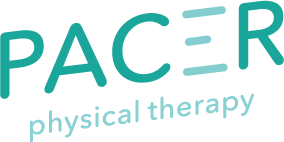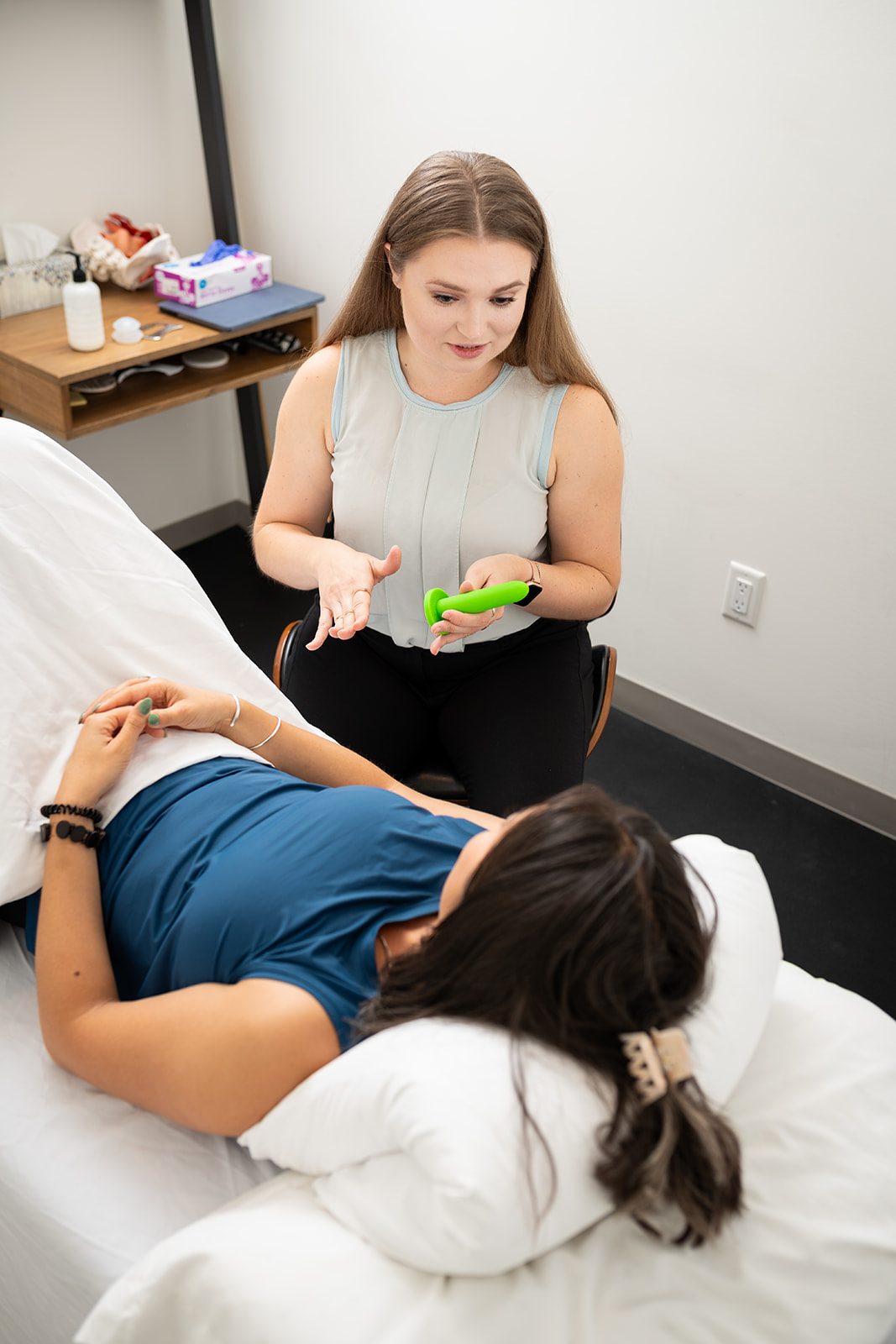As a pelvic health physical therapist, I have had numerous patients say, “Of course I leak. I’ve had a baby—that’s normal!” So let’s set the record straight:
Just because you had a baby and it’s very common to involuntarily leak urine doesn’t mean it’s normal and that it can’t be resolved.
If you notice that you pee a little every time you laugh, cough, sneeze, run, or jump, then read on! In this blog, we’ll cover the different types of urinary incontinence and what you can do to stay dry.
Postpartum Bladder Habits Fast Facts
Let’s start with some fast facts about bladder habits:
- It is normal to urinate 5-8 times per day and 0-1 times at night
- Normal amount of time between bathroom breaks is every 2-4 hours
- Urine flow should last for at least 8 uninterrupted seconds (1 mississippi, 2 mississippi, etc.)
- Typical bladder can hold up to 25 ounces
Types of Incontinence
Urinary incontinence is the involuntary loss of urine. There are many different kinds of incontinence, but the two most common types in postpartum women are stress and urge.
Stress Urinary Incontinence
Stress urinary incontinence (SUI) results in loss of urine with physical exertion, such as coughing, laughing, sneezing, running, and jumping. Urgency, or a strong need to urinate, isn’t always present with SUI.
Urge Urinary Incontinence
Urge urinary incontinence (UUI) results in loss of urine after a strong sense of urgency immediately beforehand. Common triggers of UUI include exposure to cold, hearing running water, and putting the key into your front door.
Take a moment to reflect which category you fall into. If you find yourself resonating with the symptoms and triggers of both, that’s okay–then you likely have mixed urinary incontinence.
What Should I Do?
Improve Your Bladder Habits
- Sit on the toilet seat when you pee: If you hover over the seat, then you’re engaging your core and hip muscles, which in turn contracts the pelvic floor muscles. You want the pelvic floor muscles to be relaxed around the urethral opening during urination to keep the flow effortless and smooth.
- Avoid peeing “just in case”: Aim to urinate only when your bladder gives you a strong urge.
- Retrain your bladder to go longer stretches of time between bathroom breaks: Work your way up to only urinating every 2-4 hours.
Focus on Hydration
- Drink ½ of your body weight in ounces daily, which includes at least 6-8 cups of water
- Be mindful of bladder irritants (caffeine, alcohol, citrus/acids, carbonation), which can increase urinary urgency and frequency. You don’t have to eliminate them from your diet — I certainly can’t live without caffeine — but try to consume them with water.
Learn How to Control the Urge
- Freeze: When the sense of urgency strikes, stand still or sit down. You can also put pressure over the perineum.
- Squeeze: Perform 5 quick pelvic floor contractions. When the pelvic floor muscles contract, the bladder relaxes and allows it to continue filling (instead of squeezing to urinate).
- Breathe: Perform 5 diaphragmatic breaths to regulate the nervous system.
- Ease: If you’re able to walk to a restroom, do so calmly. Otherwise, distract yourself or meditate– the sense of urgency will pass soon enough.
Treat Your Constipation (If Applicable)
- Read about it here: Pelvic Health: Constipation and Tips to Help You Go
Strengthen the Pelvic Floor Muscles
- Build endurance by holding a pelvic floor muscle contraction (kegel) for 10 seconds for 2 sets of 10 repetitions.
- Practice while lying on your back, then in sitting, standing, and paired with exercise.
Work with a Pelvic Health Physical Therapist
You can get a lot of improvement with leaking by implementing the tips above, but it’s okay if you need extra guidance. Pelvic PTs (such as myself) are here to help!
How Can a Pelvic PT Help?
Internal Exam
- Assess the pelvic floor muscles to identify any areas of weakness, restriction, overactivity, or pain.
- Provide manual trigger point release and soft tissue mobilization to provide relief to and restore length of short and painful muscles.
- Retrain correct pelvic floor contraction and relaxation, making sure there are no muscular compensations if the hips or abdomen.
Musculoskeletal Assessment
- Identifying and correcting compensations in posture.
- Checking breathing mechanics to ensure diaphragmatic breathing.
- Assessing walking and running gait to decrease impact forces.
- Restoring strength and mobility to surrounding core, lower body, and upper body muscles.
Education
- Reviewing a bladder diary to identify potential triggering activities or foods/liquids.
- Bladder retraining to gradually and appropriately increase voiding intervals.
Postpartum Urine Control: Help Is Available
I hope you are feeling educated and empowered to improve your bladder health and resolve your leaking postpartum. If you have any questions or want to chat further, feel free to book a discovery call with me today.
Remember: urine (you’re in) control!
You got this!
– Dr. Vera





